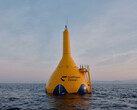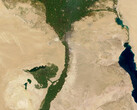30 percent of the warming measured since 1990 is said to be due to water vapor. Not just any water vapor anywhere. It has reached the stratosphere, at least 9 kilometers above the earth's surface, and is intensifying the greenhouse effect up there.
It takes a lot of energy and a lot of vapor for water to reach this altitude. A warm, probably too warm ocean would therefore be the ideal place. NASA, for example, was able to locate a huge area in the Pacific Ocean near the equator with the help of drones for weather observation.
Whether this is a feedback effect cannot be said with certainty. But it is quite possible that it was the warming of the oceans that made it possible for water vapor to rise in such large quantities.
At least one solution has already been presented. Tiny particles of non-toxic bismuth triodide with a diameter of 10 nanometers could be released as seeds for clouds. According to calculations, just 2 kilograms per week would be enough. In addition, such small quantities could be conveniently distributed using weather balloons or drones.
However, it is still unclear to what extent this approach would be useful. If large cumulus clouds form and rain down again elsewhere, everything should work as desired.
However, it is quite possible that cirrus clouds will be created at high altitudes. They let sunlight through, but act like a thin blanket that keeps the heat on the earth. Although less water vapor would reach the stratosphere, it would still cause warming.
It remains the case that the causes of climate change must be addressed first and foremost. However, it cannot be wrong to also mitigate the consequences. Just beware of the interactions.






















